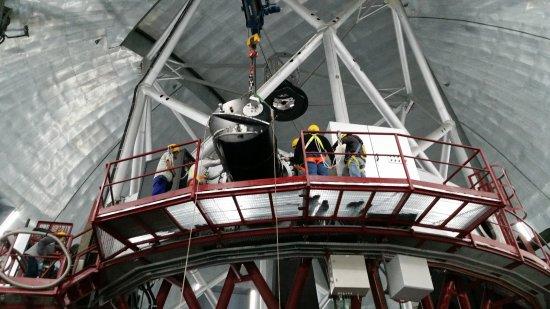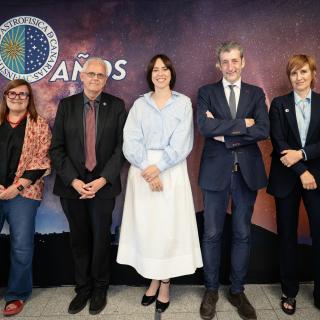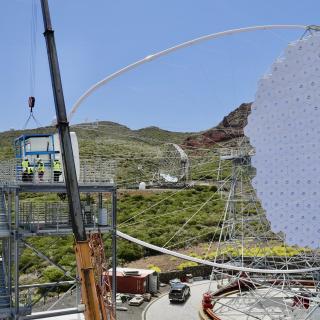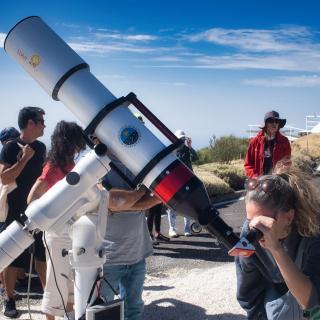The Gran Telescopio CANARIAS (GTC), the largest optical-infrared telescope in the world, sited at the Roque de los Muchachos Observatory on the Island of La Palma, has announced that the CIRCE instrument (Canarias InfraRed Camera Experiment) is now operational. It is a very sensitive camera for the near infrared range (1.0 to 2.5 micron) which will give very high image quality, even higher than that of the Hubble Space Telescope in some regions of the spectrum.
CIRCE, which is now available for the whole international astronomical community, is the first camera installed on the GTC which can observe in the infrared, which will enable us to observe very distant galaxies, and to penetrate the dust that shrouds the black hole at the center of our own Milky Way galaxy, among many other scientific applications.
The one-ton cryogenically cooled camera was developed at the University of Florida (UF) Department of Astronomy by the team led by Professor Stephen Eikenberry. It was installed on the GTC by the combined staff of UF and GTC in late 2014, and underwent "commissioning" tests ending in summer 2015.
During its commissioning phase CIRCE has already made some interesting discoveries. Among them is the death of a distant massive star observed as a burst of energetic gamma rays (see Figure 1). CIRCE observed the position in the sky of a gamma ray burst discovered by NASA’s SWIFT satellite on the day that the burst occurred, and found a faint infrared source, which disappeared after a few weeks. Astronomers in Spain and the US are now using the data from CIRCE to try to improve our understanding of these powerful explosions.
In the summer of 2015 CIRCE also observed in the infrared the explosion from a previously inactive black hole in the system V404 Cygni (see Figure 2). The instrument observed an extremely power set of burst activities during the explosion, which is the first explosion seen in this object for over 25 years. The rapid bursts (each lasting less than a second in time) detected by CIRCE are unique observations which are giving us key evidence about the nature of these enormous explosions around black holes.
Practical training for students
One of the objectives of this project has been to allow personnel in training to obtain experience in the building of instruments, and has entailed the involvement of a significant number of students in the development of CIRCE. This training was not at all easy in the context of instrumental projects for large telescopes where the participation of personnel without experience is complicated. A total of eight students from the faculties of Engineering and Astronomy at the UF, and a number of postdoctoral researchers were members of the team which developed CIRCE. All of them were helped by members of the infrared instrumentation group at UF.
Further infomation:



